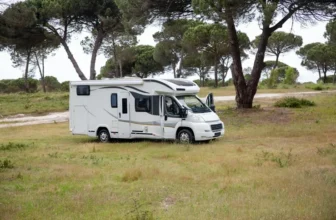What is a trail camera ?
A trail camera, also known as a game camera or a wildlife camera, is a remote camera device designed to capture still images or videos of wildlife, people, or other objects in its vicinity. These cameras are commonly used by hunters, researchers, and wildlife enthusiasts to monitor and observe animal behavior in their natural habitat.
Trail cameras are typically equipped with motion sensors and infrared or LED flash technology to capture images or videos during both day and night without disturbing the subjects. They are often placed in outdoor settings, such as forests, fields, or along trails, and are mounted on trees or other stationary objects.
Some key features of trail cameras include high-resolution image and video capture, weather resistance, long battery life, and the ability to store data on memory cards. These cameras can be a valuable tool for studying wildlife, tracking animal movements, and enhancing conservation efforts.
You can find the KJK Trail Camera Wifi 4K 48MP online for your next hunting trip.
How to set up a trail camera ?
Setting up a trail camera involves several steps to ensure it captures the desired images or videos effectively. Here’s a general guide on how to set up a trail camera:
Choose the Right Location:
Select a location with frequent wildlife activity, such as animal trails, water sources, or feeding areas.
Make sure the camera is facing a clear, open area to avoid false triggers from moving vegetation.
Install at the Right Height and Angle:
Mount the camera at a height that captures the target area effectively, usually around waist or chest height.
Adjust the angle of the camera to cover the desired field of view.
Secure the Camera:
Use straps, mounts, or security boxes to secure the camera in place. This helps prevent theft and ensures stability.
Ensure the camera is stable and won’t be easily knocked out of position by wind or animals.
Check Camera Settings:
Open the camera compartment and check the settings menu. This may involve using a built-in display or connecting the camera to a computer or smartphone.
Set the date and time correctly to timestamp your images or videos.
Choose the desired capture mode (photo, video, or time-lapse) and resolution settings.
Insert Batteries and Memory Card:
Install fresh batteries according to the camera’s specifications. Lithium batteries are often recommended for longer life in outdoor conditions.
Insert a compatible memory card with sufficient storage capacity for the images or videos you expect to capture.
Test the Camera:
Trigger the camera to ensure it is functioning correctly. Many trail cameras have a test mode that allows you to check the detection range and angle.
Review the test images or videos to ensure they meet your expectations.
Conceal or Camouflage the Camera:
Use natural surroundings like branches or leaves to conceal the camera and make it less noticeable to wildlife or potential thieves.
Regularly Check and Maintain:
Periodically check the camera to ensure it is still operational, has sufficient battery life, and has not been tampered with.
Retrieve and review the data on the memory card to monitor wildlife activity.
By following these steps, you can set up a trail camera to effectively capture images and videos of wildlife in its natural habitat. Adjustments may be necessary based on the specific features and settings of your particular trail camera model.
How does a trail camera work ?
Trail cameras work through a combination of motion sensors, infrared or LED flash technology, and a built-in camera system. Here’s a breakdown of how a typical trail camera operates:
Motion Sensors:
Trail cameras are equipped with passive infrared (PIR) motion sensors. These sensors detect changes in infrared radiation caused by the movement of warm objects, such as animals or humans.
When motion is detected within the camera’s detection range, it triggers the camera to activate and capture images or videos.
Trigger Time:
Trigger time is the delay between the detection of motion and the camera capturing an image or starting to record a video. Faster trigger times are generally more desirable as they reduce the likelihood of missing fast-moving subjects.
Camera System:
Trail cameras have a built-in camera system that includes a lens, image sensor, and processor. The lens focuses the image onto the sensor, which then converts the optical information into digital data.
The processor handles various functions such as image processing, storage, and control of the camera’s settings.
Daytime Capture:
During daylight hours, trail cameras capture images or videos in full color. The camera uses natural light to produce clear and detailed visuals.
Nighttime Capture:
In low-light or nighttime conditions, trail cameras switch to infrared or LED flash technology to illuminate the scene without using visible light. This is important for capturing images or videos without alerting or disturbing wildlife.
Infrared or LED Flash:
Infrared flash cameras use infrared LEDs to provide illumination in the dark. These LEDs emit infrared light that is not visible to the human eye, but is detectable by the camera’s sensor.
LED flash cameras use a series of visible light LEDs to illuminate the scene. While this may be visible to animals, many trail cameras offer a “low-glow” or “no-glow” mode to minimize the visibility of the flash.
Storage and Power:
Trail cameras use memory cards (SD cards, for example) to store captured images and videos. The images can later be transferred to a computer for review.
The cameras are powered by batteries, and some models may also have the option to use external power sources or solar panels for extended operation.
Settings and Customization:
Trail cameras often come with various settings that allow users to customize capture modes (photo, video, time-lapse), resolution, and other parameters to suit their specific monitoring needs.
By combining these components and technologies, trail cameras are capable of automatically capturing images or videos of wildlife or other subjects in their natural environment, providing valuable insights for research, hunting, or simple observation purposes.
How long do trail camera batteries last ?
The battery life of trail cameras can vary significantly depending on several factors, including the type of batteries used, the frequency of image or video captures, environmental conditions, and the specific features and settings of the camera. Here are some general guidelines:
Battery Types:
Lithium batteries tend to last longer than alkaline or rechargeable batteries. They are often recommended for trail cameras, especially in cold weather, as they perform well in low temperatures and provide a more extended lifespan.
Alkaline batteries are a common choice and are widely available, but they may have a shorter lifespan compared to lithium batteries, particularly in cold conditions.
Rechargeable batteries can be used, but their performance may vary, and they might have a shorter lifespan compared to lithium batteries.
Image/Video Capture Frequency:
The more frequently a trail camera captures images or records videos, the faster it will drain the batteries. If you set your camera to take pictures or record videos more often, you can expect shorter battery life.
Environmental Conditions:
Cold temperatures can reduce battery performance. Lithium batteries are generally more resilient in cold weather compared to alkaline batteries.
Extreme heat can also affect battery life, though it typically has a less dramatic impact than cold temperatures.
Camera Features and Settings:
Some advanced features, such as wireless connectivity or a large number of infrared LEDs, may consume more power and reduce battery life.
Higher resolution settings for images and videos will also use more power.
External Power Sources:
Some trail cameras offer the option to connect external power sources or solar panels, which can significantly extend battery life.
As a rough estimate, under normal conditions, a set of lithium batteries in a trail camera might last anywhere from a few weeks to several months, depending on the factors mentioned above. It’s essential to monitor the battery level regularly and replace batteries as needed to ensure the camera remains operational. Additionally, if you plan to use a trail camera for an extended period, consider using lithium batteries or external power sources for better longevity.

Choose the best location for your trail camera
Choose the best location for your trail camera in your hunting trip
Choosing the best location for your trail camera is crucial to capturing quality images or videos of wildlife. Here are some tips for selecting an optimal location:
Animal Trails and Paths: Place the trail camera along known animal trails or paths. These areas are likely to have higher wildlife activity, increasing the chances of capturing interesting footage.
Water Sources: Install the camera near water sources such as rivers, streams, ponds, or watering holes. Animals frequently visit these areas to drink, providing excellent opportunities for capturing diverse wildlife.
Feeding Areas: Identify feeding areas where animals gather to eat. This could include locations with abundant vegetation, fruit-bearing trees, or areas where animals graze.
Natural Funnels and Bottlenecks: Set up the trail camera in natural funnels or bottlenecks, such as narrow passages between two large objects. These areas can increase the likelihood of capturing animals as they pass through.
Scrapes and Rubs (for Deer): During certain seasons, deer create scrapes (areas where they paw the ground) and rubs (where they rub their antlers on trees). Placing the camera near these locations can yield interesting footage.
Game Trails Crossings: Identify locations where game trails intersect. Placing the camera at these crossroads can increase the chances of capturing multiple angles of passing wildlife.
Elevated Positions: Mount the camera at a suitable height to capture a clear view of the target area. This can help prevent false triggers from vegetation and provide a better perspective for identification.
Avoid Direct Sunlight: Position the camera to avoid direct sunlight, as it can cause glare or false triggers. A north-facing direction might be preferable to minimize the impact of the sun.
Camouflage the Camera: Use natural elements like branches or leaves to camouflage the camera and make it less noticeable to wildlife. Avoid placing it in a way that might startle or disturb animals.
Security Considerations: If possible, place the camera out of direct sight and secure it with straps, mounts, or a security box to deter theft or tampering.
Check Local Regulations: Be aware of any local regulations or guidelines regarding the use of trail cameras, especially on public lands.
Regularly changing the location of your trail camera and experimenting with different setups can provide a more comprehensive understanding of the local wildlife and increase the diversity of captured images. Remember to check the camera regularly to retrieve data and ensure it continues to operate effectively.
What is a cellular trail camera ?
A cellular trail camera, also known as a wireless or cellular-enabled trail camera, is a type of trail camera that incorporates cellular technology to transmit images or videos wirelessly to a remote location. Unlike traditional trail cameras that store images or videos on a memory card for later retrieval, cellular trail cameras allow users to receive real-time or near-real-time updates through cellular networks.
Cellular trail cameras use built-in cellular modems to connect to mobile networks, such as 4G or 3G networks. Some advanced models may even support 5G.
Users can remotely access the images or videos captured by the camera through a dedicated mobile app, website, or email. This feature enables users to monitor wildlife activity without physically visiting the camera site.
Cellular trail cameras can be configured to send real-time notifications when motion is detected, allowing users to receive immediate alerts and view images or videos as soon as they are captured.
Some cellular trail cameras offer cloud storage options, allowing users to store and access their captured media in the cloud. This feature enhances data security and provides a convenient way to manage large amounts of footage.
Users can remotely adjust camera settings, such as image resolution, capture intervals, and sensitivity, without having to visit the physical location of the camera.
Certain models of cellular trail cameras may include GPS functionality, enabling users to track the camera’s location. This feature can be useful for security purposes or when deploying cameras in remote areas.
Some cellular trail cameras come with integrated solar panels or support external solar power sources. This can extend the camera’s operating time and reduce the need for frequent battery replacements.
Cellular trail cameras are popular among hunters, researchers, and wildlife enthusiasts who want to monitor wildlife activity without disturbing the environment or regularly visiting the camera site. However, it’s important to note that cellular trail cameras require a cellular service plan, and users should be aware of associated subscription costs. Additionally, the availability and strength of cellular signals in the camera’s location can impact its performance.








